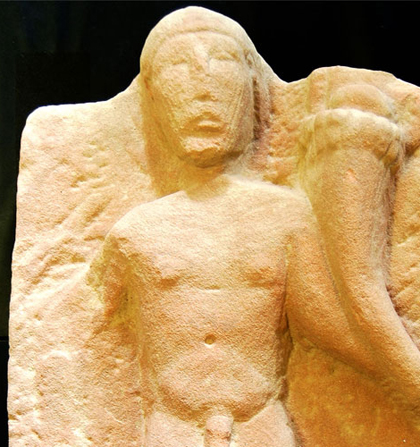
The vague outline of an altar can be seen below the hand of the genius, unearthed in a 2,500-square metre area at Papcastle, where the 2009 floods gave excavators the first glimpses of Roman remains.
A cap worn by the male statue comes from the Phrygian kingdom in modern-day Turkey, meaning the figure could be Mithras, who was worshipped in the north between the 1st and 4th centuries AD. Archaeologists are also speculating that he could be the Greek god Attis, which would be likely to identify the female head as Cybele - Phrygia's only known goddess.
"This happens once in a lifetime," says Frank Giecco, of Wardell Armstrong Archaeology, which has overseen the Heritage Lottery Fund-backed Discovering Derventio project.
"You can work in archaeology all your life and never find anything like that. It's incredible."

"During the initial stages, the amount of Roman pottery recovered was significant," says Dave Jackson, of the archaeology team.
"Forty-two objects of significant interest were unearthed in the first week alone.
"Work began at the southern extent of the investigation area, but it soon became apparent that the archaeological features identified through geophysical investigation were going to be difficult to identify on the ground.
"This difficulty in identification is a result of extensive flood deposits, both pre-dating and post-dating the archaeological features, which limit the visual differences between the features and the surrounding natural ground."








Reader Comments
to our Newsletter